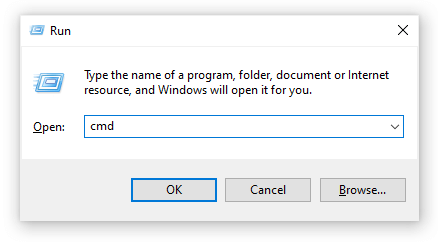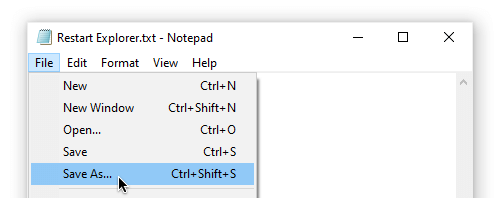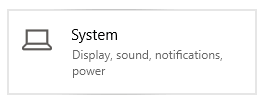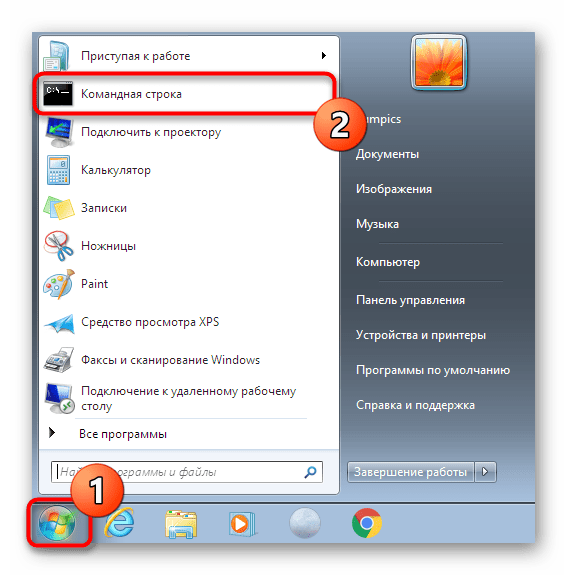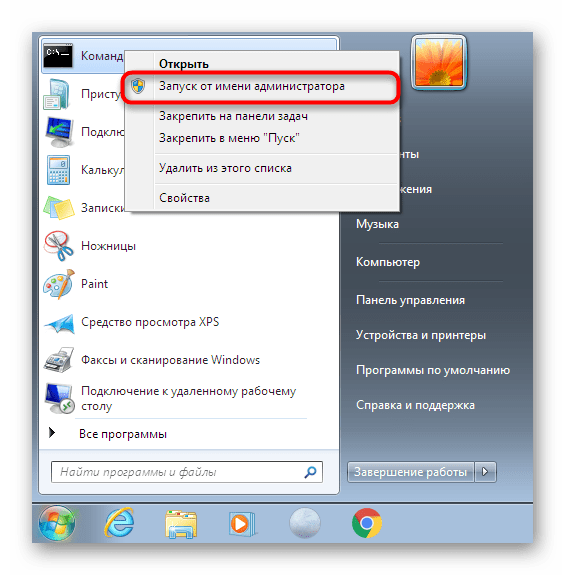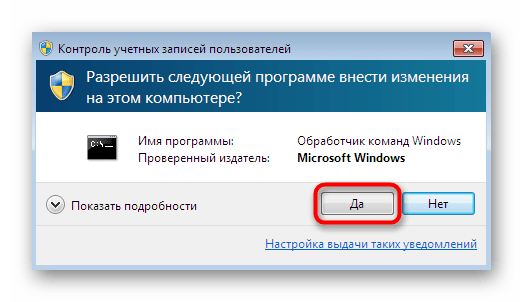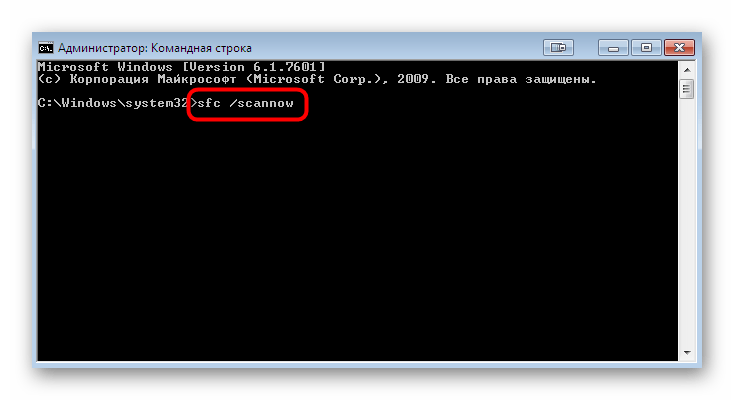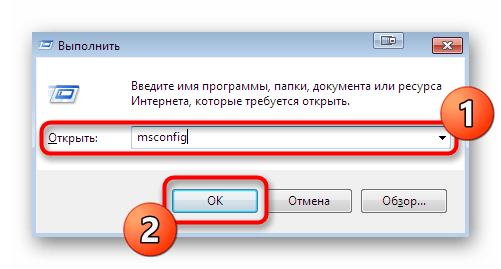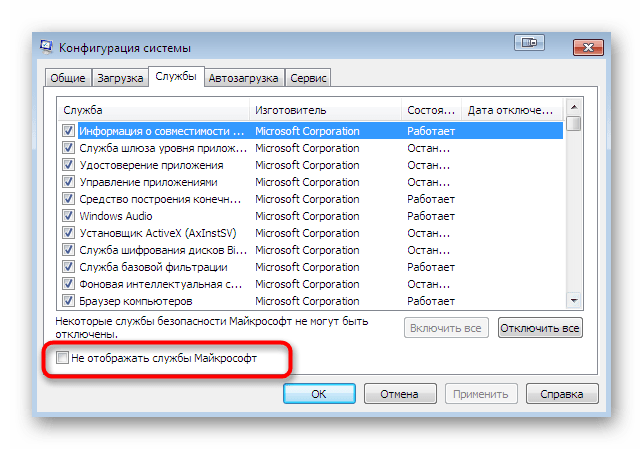Windows 7 Home Basic Windows 7 Home Premium Windows 7 Enterprise Windows 7 Professional Windows 7 Ultimate Windows Vista Home Basic Windows Vista Home Basic 64-bit Edition Windows Vista Home Premium Windows Vista Home Premium 64-bit Edition Windows Vista Enterprise Windows Vista Enterprise 64-bit Edition Windows Vista Business Windows Vista Business 64-bit Edition Windows Vista Ultimate Windows Vista Ultimate 64-bit Edition More…Less
Symptoms
When working in Windows, you may receive the following error message:
Windows Explorer has stopped working. Windows is restarting
Additionally, you may notice the screen flicker just before or after the error message appears.
Cause
This issue can be caused due to any of the following issues:
-
You may be using an outdated or corrupted video driver
-
System files on your PC may be corrupt or mismatched with other files
-
You may have a Virus or Malware infection on your PC
-
Some applications or services running on your PC may be causing Windows Explorer to stop working
Resolution
To resolve this issue you need to determine what is causing Windows Explorer to stop working, try the troubleshooting steps below to help determine the issue.
Update your current video driver
Outdated or corrupt video drivers can cause Windows Explorer to stop working. Downloading and installing the latest video driver can solve many of these issues. You can do this from using Windows Update or by visiting your system manufacturer’s website or by contacting them directly.
For more information on updating your drivers, see the following content on the Microsoft website:
Run System File Checker (SFC) to check your files
Use System File Checker to scan your PC for missing or corrupt files. To do this, follow these steps:
-
Click Start, and then type cmd in the Search box.
-
In the results area, right-click cmd.exe, and then click Run as administrator. You may be prompted to type the password for an administrator account.
-
Click Continue if you are the administrator or type the administrator password and then, click Continue.
-
At the command prompt, type Sfc /scannow and then press ENTER.
The scan may take some time, so be patient. Windows will repair any corrupted or missing files that are found. If information from the installation CD is needed to repair the problem, you may be prompted to insert your Windows CD.
For more information about System File Checker (SFC) see the following KB article on the Microsoft website:
How to use the System File Checker tool to troubleshoot missing or corrupted system files on Windows Vista or on Windows 7
Scan your PC for Virus or Malware infections
Virus and Malware infections can cause problems with application performance. Use your favorite antivirus software to scan for any infections that might be hiding on your PC. If you don’t have an antivirus you can download and install Microsoft Security Essentials for free by following the link below.
Microsoft Security Essentials
Start your PC in Safe Mode to check for startup issues
Start your PC in Safe Mode and see if you can reproduce the error. After starting your PC in Safe Mode, work as you normally do and perform the same actions that you perform when getting the error. If you still receive the error in Safe Mode, go to the next section and follow the steps to do Clean Boot troubleshooting.
To learn how to start your PC in Safe Mode, see the following article on the Microsoft website:
Start your computer in safe mode
Start your PC in a Clean Boot environment and troubleshoot the issue
If you do not experience the same crashes in Safe Mode, it’s very likely a startup item is causing the issue. Follow the steps found on the following article to perform a clean boot and pinpoint the item causing the issue.
How to troubleshoot a problem by performing a clean boot in Windows Vista or in Windows 7
Additional Troubleshooting Steps:
The additional troubleshooting steps below are less common but can still cause Windows Explorer to stop working.
Test your system’s RAM memory
Sometimes faulty RAM (Random-Access Memory) can cause intermittent problems within Windows. Use the Windows Memory Diagnostics Tool by clicking Start, type Memory Diagnostics and select the result in the list. When the Windows Memory Diagnostics Tool window appears, choose Restart now and check for problems (recommended).
Test for picture files that may contain corruption
Corrupt images can sometimes issues with Windows Explorer. If Windows Explorer stops working while working with pictures or browsing folders that contain pictures, there may be corruption is one or more picture files. To test for this issue, follow the steps below:
-
Click Start and click Computer
-
Click Organize and select Folder and search options from the dropdown
-
On the Folder Options window, click the View tab
-
Place a check in the option to Always show Icons, never thumbnail
-
Remove the check for the option to Display file icon on thumbnails
-
Click OK to close the Folder Options window
Now, go to any folders that contain Pictures or Videos and see if you can reproduce the issue. If Windows Explorer does stop working, the folder that you were viewing possibly contains one or more pictures files that are corrupt or contain corrupted thumbnail data.
Note: After adjusting the options to Display file icon on thumbnails, and Always show Icons, never thumbnail, files no longer display thumbnails so pictures and other files will display as the default icon for their file types. If you can reproduce the error with these options set, the issue is not with pictures or videos and you should return the Folder options to their original settings.
Check the details of the error to see which application caused Windows Explorer to stop working. To do this, follow these steps:
-
Click Start and type Action Center in the Search area and click Action Center from the returned list
-
In the Action Center window, click Maintenance, click View reliability history and then click View all problem reports from the bottom of the Reliability Monitor window
-
Scroll down to the list of Windows Explorer items
-
Double-click on Stopped working to view technical details and then make a note of the technical details.
Perform a System Restore
If the solutions above do not resolve the issue you can perform a System Restore to restore the PC back to a time before the issue started. If the issue has been occurring for a month or more, it may be better to follow the steps in the next section and perform an In-Place Upgrade to repair the issue. To perform a System Restore, follow the steps in the article listed below:
System Restore
Perform an In-Place Upgrade
If the issue has been occurring for a month or more, it may be better to perform an In-Place Upgrade and restore Windows to the original installation. Performing an In-Place Upgrade will not damage files and applications that are currently installed on your computer. To perform an In-Place Upgrade, follow the steps in the article listed below:
How to Perform an In-Place Upgrade on Windows Vista, Windows 7, Windows Server 2008 & Windows Server 2008 R2
More Information
Have other questions? To obtain free support, check out our Microsoft Community. There, you can search for answers or ask other users specific questions. Click the following link to visit the Microsoft Community Forums:
Microsoft Community
To see Answers posts about this issue, click the following link:
Error: Windows Explorer has stopped working
Need more help?
- Remove From My Forums
-
Вопрос
-
Description
Problem signature
Files that help describe the problem
explorer.exe.atk.kdmp
AppCompat.txt
explorer.exe.xml
WERInternalMetadata.xml
memory.hdmp
minidump.mdmp
Problem Event Name: AppTermFailureEvent
OS Version: 6.1.7600.2.0.0.256.1
Locale ID: 2057
A problem caused this program to stop interacting with Windows.
Ответы
-
Hi,
This issue can occur by several factors, such as incompatible third party programs, virus or driver. To troubleshoot the issue, please perform the following steps.
1. Restart the machine in Safe Mode and launch Windows Explorer again. Does it crash now? If so, please let me know. Otherwise, please move on the next steps.
2. Perform a
Clean Boot to check the result.3. Upgrade the virus definition and run a complete scanning.
Does it hang now?
Thanks,
Novak
Please remember to click “Mark as Answer” on the post that helps you, and to click “Unmark as Answer” if a marked post does not actually answer your question. This can be beneficial to other community members reading the thread. ”
-
Помечено в качестве ответа
28 июня 2010 г. 2:32
-
Помечено в качестве ответа
Windows Explorer is your primary way of navigating your system. It allows you to see, access, and manage all the files residing on your device.
When Windows Explorer is not responding, frozen, or won’t open, you will run into many frustrating problems while trying to use your computer.
We’re here to help you with this issue. This guide focuses on how you can fix the Windows Explorer not responding on a Windows 10 operating system.
Note: Windows Explorer is also referred to as File Explorer in newer operating systems. They mean the same thing, just run under a slightly different name.
What causes Windows Explorer not to respond to errors?
Sadly, there’s no definite cause that could be the source of this rather annoying issue.
Based on user reports from the Windows 10 community, we can determine multiple causes that may lead to your Windows Explorer not responding, freezing, or not opening at all.
- The File Explorer history needs to be cleared. There’s a possibility that your File Explorer history is clogged and it’s causing Windows Explorer to behave incorrectly. Clearing this should do the trick. You can find out how to clear the File Explorer history below.
- Your display settings were changed. Users report that changes to display settings such as the font size can cause Windows Explorer to break. If you’ve recently changed the settings or allowed an application to change them, reverting is the best option.
- The Windows 10 version you’re using is out of date. Updating Windows is crucial. While it may bring some annoyances in the form of new bugs, it also patches up many existing issues and security holes. If you’re running an older version of Windows 10, don’t rule out the possibility of updating to the latest release.
- There’s no available space on your system drive. If your system drive is full, Windows Explorer may not be able to function as intended. Make some space following our tips below.
- Something is wrong with your system. Sometimes your system files can cause Windows Explorer to stop responding or opening. There are many general troubleshooting options listed below to help you fix system-level issues.
Fix: Windows Explorer not responding
We’ve identified most of the possible causes for this problem, and now it’s time to fix your Windows Explorer. We’ve compiled a great number of solutions to help you no matter what causes Windows Explorer to behave in a faulty way.
Method 1: Automatically restart the Windows Explorer in the Task Manager
The first thing to try is restarting the Windows Explorer / File Explorer.
Here’s how you can restart the Windows Explorer / File Explorer with the Task Manager in Windows 10:
- Right-click on an empty space in your taskbar and select the Task Manager.
- If your Task Manager launcher in compact mode, make sure to click on More details.
- Stay in the default Processes tab and click on Windows Explorer.
- Click on the now visible Restart button in the bottom-right of the window.
- Wait for Windows Explorer to restart. Your taskbar, windows, and desktop will temporarily disappear — this is normal.
- Check if you can use Windows Explorer now.
Method 2: Manually restart Windows Explorer with the Command Prompt
Another method of restarting the Windows Explorer / File Explorer is using the Command Prompt. Sometimes an automated restart isn’t the best way to go, which is why you can also use a command to get the job done.
This is how you can restart the Windows Explorer / File Explorer using nothing but the Command Prompt:
- Press the Windows + R keys to launch the Run application.
- Type in “cmd” and press Ctrl + Shift + Enter to launch a Command Prompt with administrative permissions.
- Input the following command to stop the Windows Explorer, then press Enter to execute the command:
- taskkill /f /im explorer.exe
- Next, input a command to restart Windows Explorer. Don’t forget to press enter after you type the command in!
- start explorer.exe
- Close the Command Prompt and check if you can use Windows Explorer now.
Method 3: Restart the explorer.exe process with a batch file
Still, no luck restarting? No problem! There’s one more thing to try, which is creating a batch (.bat) file and running it with administrative permissions to end and restart the Windows Explorer / File Explorer.
- Right-click on an empty space on your Desktop, then click on New → Text document.
- Name the file Restart Explorer and open it with any notepad application.
- Paste the following text into the document:
taskkill /f /IM explorer.exe
start explorer.exe
exit - Go to File → Save as.
- Select “All Files” as the file type, then rename the text document to “Restart Explorer.bat” and click Save.
- Go to your Desktop and right-click on the Restart Explorer.bat file, then select Run as administrator.
- Check if you can use Windows Explorer now.
Tip: If you keep the batch file you just created, you can easily restart Windows Explorer using it any time!
Method 4: Clear the File Explorer history
As mentioned above, the Windows Explorer / File Explorer history may get clogged and cause problems. You can easily fix this by clearing the history.
- Press the Windows + R keys to launch the Run application. Type in “control” and hit the OK button.
- Make sure that your viewing mode is set to Large icons.
- Click on File Explorer Options.
- Click on the Clear button in the Privacy section.
- Check if Windows Explorer works now.
Method 5: Revert your display settings
In specific cases, users report that reverting their display settings to default allowed them to use the Windows Explorer / File Explorer as if nothing happened.
- Click on the Windows logo in the bottom-left of your screen, then choose Settings. You can also use the Windows + I keyboard shortcut to open it.
- Click on the System tile.
- Make sure you stay on the default Display tab.
- Under the Scale and layout section, set the scaling for text, apps, and other items to 100%.
- Check if Windows Explorer works properly now.
Method 6: Make space on your system drive
When your system drive (typically the C: drive) is full, many issues can come up. Space is required by all applications to store data, including Windows Explorer itself. When this space is not available, Windows Explorer may not respond or even launch.
Here’s what you can do to clear some space up on your system, allowing the Windows Explorer / File Explorer to run with ease. Use these video guides to quickly free up space on your device.
- How to Use Storage Sense to Free Up Space on Windows 10
- Windows 10: How to Empty Recycle Bin
- How to Clean C Drive In Windows 10
Method 7: Run the System File Checker scan
The System File Checker, also known as SFC scan, allows you to automatically fix a number of issues on your system. By running it, you may be able to get rid of the Windows Explorer / File Explorer not responding or freezing error.
- Press the Windows + R keys on your keyboard to launch the Run utility. Type in “cmd” and press Ctrl + Shift + Enter. This is going to open the Command Prompt with administrative permissions.
- Type in the following command and press Enter: sfc /scannow
- Wait for the System File Checker to finish scanning your computer. If it finds any errors, you’ll be able to fix them automatically through the SFC command itself, which may also fix related errors.
Method 8: Update Windows 10
If none of the methods above worked for you, we recommend simply switching over to the latest version of Windows 10.
Sometimes, installing the latest Windows 10 update is the easiest and fastest way of getting rid of issues like the Windows Explorer / File Explorer not responding. Additionally, you can get access to new features, better security, and more optimization from Microsoft.
Here’s how you can quickly update your system.
- Open the Settings application using the Start menu or the Windows + I keyboard shortcut.
- Click on Update & Security.
- In the Windows Update tab, click on the Check for updates button.
- If a new update is found, click on the Install button.
We hope these methods were able to help you eliminate the Windows Explorer / File Explorer not responding error on your device!
Перейти к контенту
На одном из компьютеров с Windows 10 стал зависать проводник (explorer.exe) при стандартном вызове из нижней панели.
В журнале ошибок появляется следующая невнятная запись: «Программа explorer.exe версии 10.0.17134.165 прекратила взаимодействие с Windows и была закрыта. Чтобы узнать, имеются ли дополнительные сведения о проблеме, проверьте историю проблемы в разделе «Безопасность и обслуживание» в панели управления.»
Полностью текст ошибки, регистрируемой в журнале Windows, выглядит так:
Имя журнала: Application
Источник: Application Hang
Дата: 16.08.2018 10:48:09
Код события: 1002
Категория задачи:(101)
Уровень: Ошибка
Ключевые слова:Классический
Пользователь: Н/Д
Компьютер: ws-trader-01
Описание:
Программа explorer.exe версии 10.0.17134.165 прекратила взаимодействие с Windows и была закрыта. Чтобы узнать, имеются ли дополнительные сведения о проблеме, проверьте историю проблемы в разделе «Безопасность и обслуживание» в панели управления.
ИД процесса: 3234
Время запуска: 01d435349c6289da
Время завершения: 0
Путь приложения: C:Windowsexplorer.exe
ИД отчета: ec88a9fd-792d-41e2-bb26-f94647ccdf02
Полное имя сбойного пакета:
Код приложения, связанного со сбойным пакетом:
Xml события:
<Event xmlns=»http://schemas.microsoft.com/win/2004/08/events/event»>
<System>
<Provider Name=»Application Hang» />
<EventID Qualifiers=»0″>1002</EventID>
<Level>2</Level>
<Task>101</Task>
<Keywords>0x80000000000000</Keywords>
<TimeCreated SystemTime=»2018-08-16T07:48:09.256806800Z» />
<EventRecordID>5841</EventRecordID>
<Channel>Application</Channel>
<Computer>ws-trader-01</Computer>
<Security />
</System>
<EventData>
<Data>explorer.exe</Data>
<Data>10.0.17134.165</Data>
<Data>3234</Data>
<Data>01d435349c6289da</Data>
<Data>0</Data>
<Data>C:Windowsexplorer.exe</Data>
<Data>ec88a9fd-792d-41e2-bb26-f94647ccdf02</Data>
<Data>
</Data>
<Data>
</Data>
<Binary>430072006F00730073002D00700072006F00630065007300730000000000</Binary>
</EventData>
</Event>
При этом, при вызове из FAR «explorer.exe /?» проводник открывается без зависаний с открытием папки «Документы». Замечено, что при стандартном открытии проводник обращается к папке «Быстрый доступ».
Немного погуглив, не нашел никакого конкретного решения проблемы. На официальных форумах Microsoft советуют копать глубже в журналах системы, не приводя каких-либо конкретных решений.
Для решения проблемы сделано следующее.
Очищена папка (скрытая) C:users<user>Recent (это линк на C:users<user>AppDataRoamingMicrosoftWindowsRecent) – удалены все документы (линки) и вложенные папки. Не удаляется папка AutomaticDestination с двумя вложенными объектами.
После очистки указанной папки стандартный запуск проводника с нижней панели проходит без зависаний.
Содержание
- Исправляем ошибку «Прекращена работа программы «Проводник»» в Windows 7
- Способ 1: Перезапуск «Проводника»
- Способ 2: Проверка целостности системных файлов
- Способ 3: Проверка сторонних служб
- Способ 4: Дополнительные действия
- Вопросы и ответы
Во всех версиях операционной системы Windows «Проводник» считается основой графической системы. Он не только выполняет роль файлового менеджера, но и позволяет пользователям запускать различные программы, искать и изменять всяческие объекты. Из этого выходит, что данный инструмент является одним из самых главных в оболочке, а его нестабильное функционирование часто приводит к глобальным ошибкам. Иногда пользователи сталкиваются с зависанием, которое сопровождается надписью «Прекращена работа программы «Проводник»». Это значит, что оболочка просто перестала отвечать на запросы юзера из-за какого-то раздражителя. В этом материале мы хотим продемонстрировать способы поиска причины данной неполадки и ее решения.
Сразу нельзя сказать, что именно провоцирует появление ошибки с завершением работы «Проводника». Потому пользователю придется вручную анализировать систему, перебирая все доступные варианты. Только таким путем можно быстрее всего отыскать проблему и решить ее с помощью уже имеющихся инструкций. Мы же постарались максимально упростить выполнение этой задачи, разместив способы от самого легкого и действенного, до сложных и редко встречающихся. Поэтому рекомендуем начать с самой первой рекомендации.
Способ 1: Перезапуск «Проводника»
Иногда завершение функционирования «Проводника» происходит по чистой случайности. Например, в какой-то момент резко поднялся процент использования системных ресурсов или была израсходована вся оперативная память, из-за чего и случился вылет оболочки. Тогда поможет банальная перезагрузка компьютера, однако это может привести к потере данных, которые не были сохранены. Мы же советуем попытаться перезапустить explorer.exe, используя приведенные рекомендации в статье по следующей ссылке. После этого уже можно сохранить все документы и перезагрузить ПК, дабы удостовериться, что ошибка больше не появляется.
Подробнее: Перезапуск «Проводника» в Windows 7
Способ 2: Проверка целостности системных файлов
Если же вылеты продолжают появляться, придется задействовать более радикальные методы. Первый из них подразумевает полное сканирование системных разделов жесткого диска с целью нахождения поврежденных файлов или ошибок. Осуществляется эта операция с помощью стандартного средства Виндовс 7, которое и исправит найденные неполадки. Его запуск выглядит так:
- Откройте «Пуск» через поиск отыщите там «Командную строку» и кликните по ней правой кнопкой мыши.
- В появившемся контекстном меню выберите вариант «Запуск от имени администратора».
- Подтвердите разрешение программе на внесение изменений в ПК, выбрав «Да».
- После запуска консоли вставьте туда команду
sfc /scannowи нажмите на клавишу Enter. - Ожидайте начала проверки системы.
- Сначала статус сканирования будет отображаться в виде процентов, а затем появится уведомление о том, что проверка была завершена, а в случае обнаружения ошибок они были исправлены.
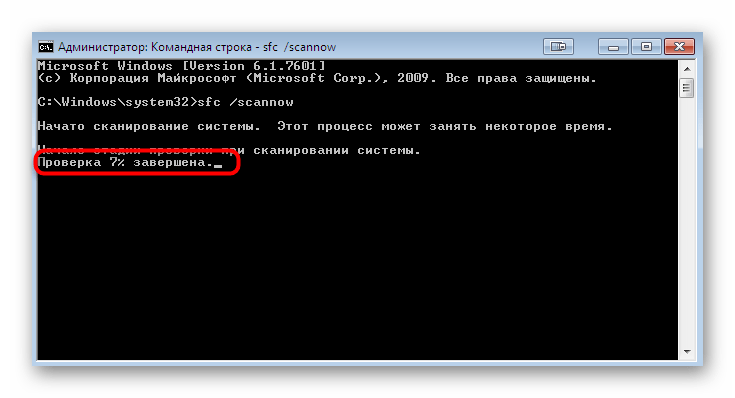
Однако иногда в отчете содержится информация с содержимым «Защита ресурсов Windows обнаружила поврежденные файлы, но не может восстановить некоторые из них». Это значит, что SFC не может корректно функционировать на текущий момент времени. Потому придется прибегнуть к дополнительным действиям. В Windows 7 имеется утилита DISM, основная задача которой заключается в налаживании работы основных системных компонентов. Потребуется запустить сначала ее, а после успешного восстановления снова перейти к тем инструкциям, которые вы получили выше.
Подробнее: Восстановление поврежденных компонентов в Windows 7 при помощи DISM
Если какие-либо проблемы были найдены и исправлены, просто перезагрузите компьютер и приступайте к своему стандартному взаимодействию с операционной системой, чтобы проверить, действительно ли больше «Проводник» не завершает свою работу.
Способ 3: Проверка сторонних служб
Третий вариант является более затратным по времени, поскольку подразумевает проверку каждой сторонней службы, которая установлена в ОС. Иногда как раз фоновые процессы, не относящиеся к стандартной функциональности Виндовс, и провоцируют непредвиденное отключение «Проводника». Потому давайте поговорим о том, как путем перебора найти раздражителя и избавиться от него.
- Откройте стандартную утилиту «Выполнить» с помощью горячей клавиши Win + R. В поле ввода напишите
msconfigи нажмите на клавишу Enter или кнопку «ОК». - В появившемся окне «Конфигурация системы» переместитесь во вкладку «Службы».
- Здесь отметьте галочкой пункт «Не отображать службы Майкрософт», чтобы отсеять стандартные задачи.
- Теперь в оставшемся списке осталось только поочередно отключать каждую службу, перезагружая ПК, чтобы найти того самого раздражителя.
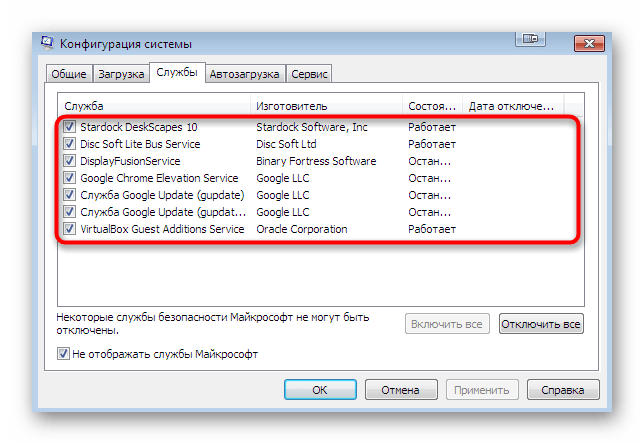
Выполняемые действия после выявления той самой службы, провоцирующей вылет «Проводника», уже зависят от того, какое программное обеспечение отвечает за нее. Иногда поможет банальное обновление драйверов графического адаптера, а в других ситуациях нужно либо держать службу в отключенном виде либо удалять некорректно функционирующее ПО.
Способ 4: Дополнительные действия
На нашем сайте существует отдельная статья, посвященная восстановлению работы «Проводника». Если приведенные выше методы вам не помогли, советуем ознакомиться именно с этой статьей. В ней автор предлагает использовать шесть различных методов, позволяющих наладить функционирование графической оболочки. Действуйте по тому же принципу — путем перебора, начиная с первого варианта. Изучить эту статью можно, перейдя по указанной ниже ссылке.
Подробнее: Восстановление работы «Проводника» в Windows 7
Выше вы были ознакомлены с доступными методами решения проблемы «Прекращена работа программы «Проводник»» в операционной системе Windows 7. Как видите, причин может существовать огромное количество, поэтому главная задача, поставленная перед пользователем — отыскать виновника, а уже само исправление не займет много времени. К откату ОС или ее переустановке следует переходить только тогда, когда вы уже попробовали абсолютно все рекомендации и ни одна из них не принесла должного результата.
Читайте также:
Восстановление системы в Windows 7
Создаем загрузочную флешку с Windows 7
Установка Windows 7 поверх Windows 7
Переустанавливаем Windows 7 без диска и флешки



